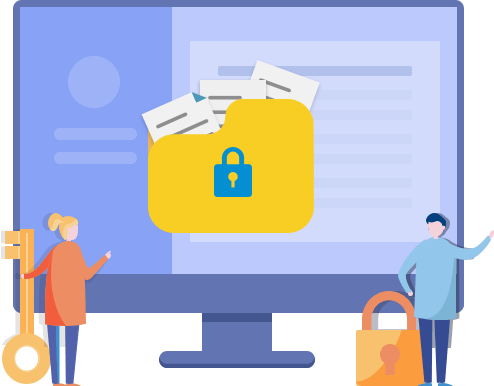How to Encrypt USB Drive with or Without BitLocker Windows 10
A USB disk is small and easy to carry, has a large storage capacity, and is safe. And, a USB drive is very simple and convenient to use. The biggest difference between a USB drive and a hard disk is that it does not require a physical drive, plug and play. Most modern operating systems can read and write to the USB drive without the need to install additional drivers. For these reasons, USB flash drives are widely used to store all kinds of important data for backup or transfer.
Should I Encrypt My USB Drive
For more secure use of USB drive and data protection, it is still essential to encrypt your USB peripherals to protect your sensitive file and avoid a data leak, which could cause irreparable damage. This type of data includes personal or business details, photos, ID information, social security information, tax information, account passwords, financial information, and other sensitive data.
In this post, we will show you how to encrypt USB drive in Windows 10 and macOS. You can learn how to encrypt a USB with or without BitLocker. After password protects the USB drive, only authorized people can access and read your USB drive.
How to Encrypt a USB Drive on Windows 10 Without BitLocker
BitLocker is a disk encryption tool that comes with Windows 10 Pro and Windows 10 Enterprise, which can encrypt your internal disk, external disk, and USB drive. But because its encryption effect is not particularly good, many users want to use other ways to encrypt hard drives to protect data.
Then, how to encrypt a USB drive without BitLocker on Windows 10 or new Windows 11? You can use EaseUS LockMyFile, a lightweight and military-grade encryption tool that can protect files, folders, and drives in great security.
EaseUS LockMyFile enables you to encrypt files and folders on the USB drive into GFL format or EXE format file with AES encryption algorithm. You can encrypt a Zip file, photos, videos, Word, Excel, PDF, as well as other file formats and folders. After encryption, no one can read the files or folders on the USB drive without a password.
Here are the step-by-step guides to encrypt USB drive without BitLocker.
Step 1. Enter "easeus" to launch EaseUS LockMyFile, register with a valid email and a license code.
Step 2. Click File Encryption under More Tools > Click Add Files or Add Folders.
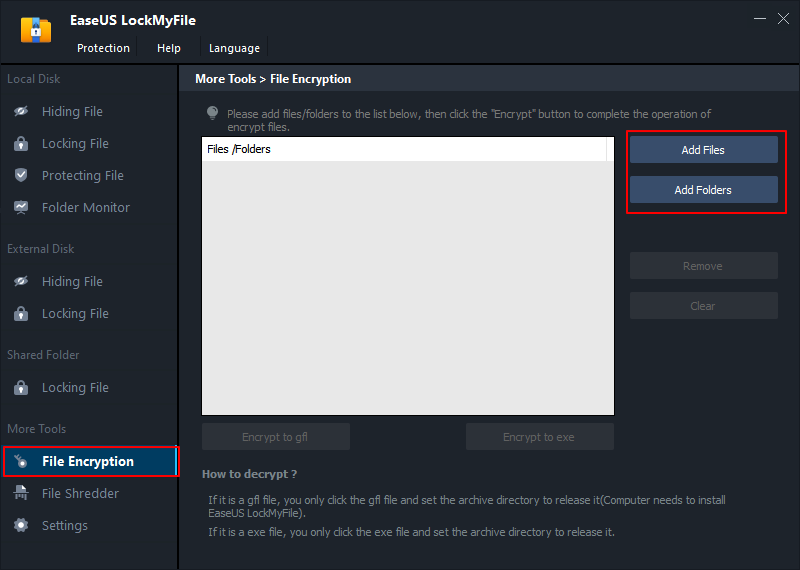
Step 3. Select important files or folders that you need to encrypt, and click Open.
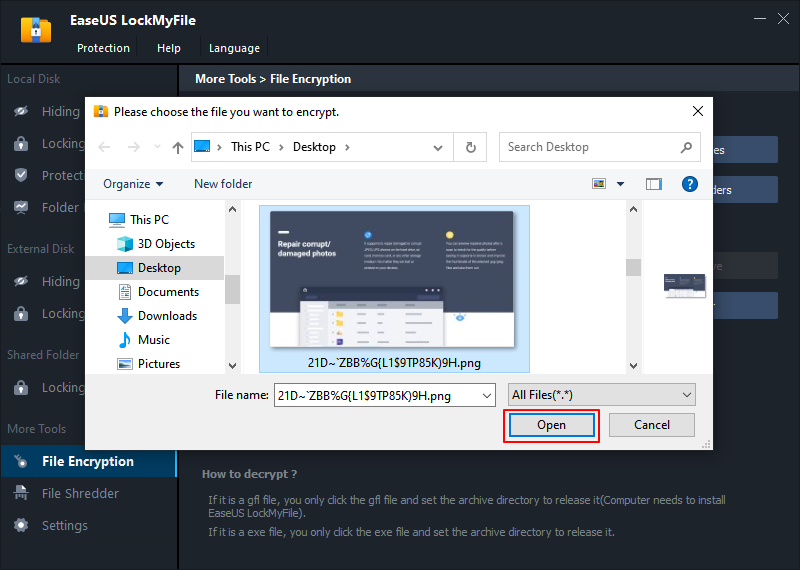
Step 4. Select the encryption mode: Encrypt to gfl or Encrypt to exe.
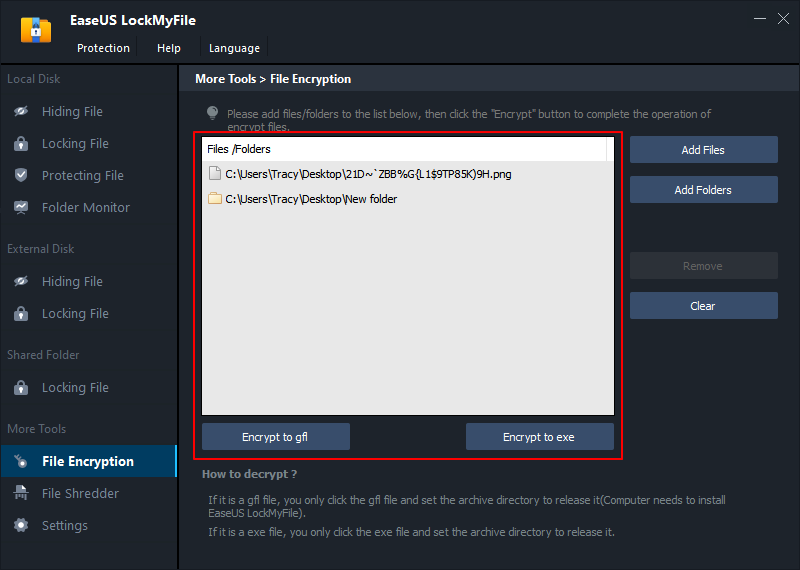
Step 5. Browse a safe location on your PC, rename the encrypted file or folder, and click Save to save the encrypted files/folders.
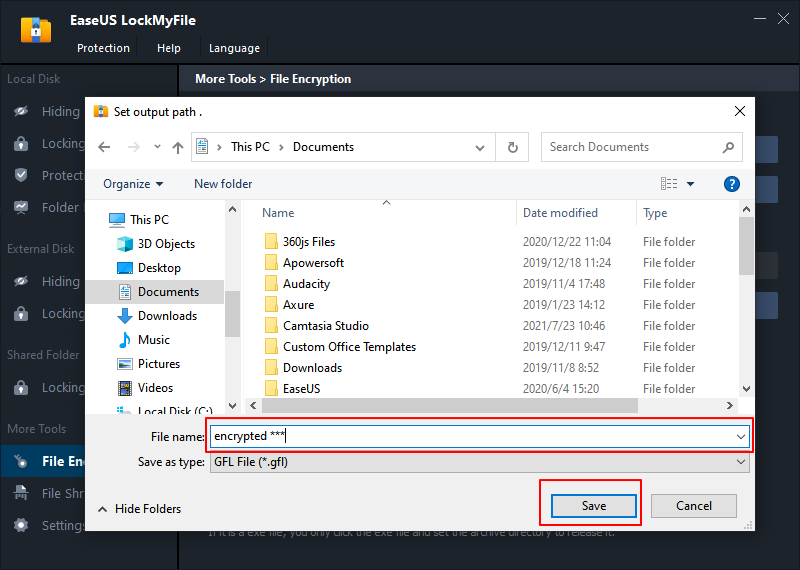
Other key features of EaseUS LockMyFile you may be interested in:
- User-friendly with graphical user interface
- Hide your files/folders on a local disk, USB flash drive, or external hard drive. Make your folders completely invisible and unsearchable
- Password protects a folder or file on an internal or external disk. Newly added files become password protected automatically
- Lock files and folders on a local or external disk, or lock a local hard drive
- Set passwords for your folder shared on the network that limits access to them
How to Encrypt USB Drive by Using BitLocker on Windows 10/11
BitLocker Drive Encryption is a new data protection function added to Windows. It is mainly used to solve a problem that people are more and more concerned about: the theft or malicious leakage of data caused by the physical loss of computer equipment. BitLocker uses TPM to help protect the Windows operating system and user data and to help ensure that the computer cannot be tampered with even if it is unattended, lost, or stolen.
However, after opening the encrypted drive, you can enter again without a password, which does not provide strong security protection. Because of this problem, many users want another way to encrypt USB drive without BitLocker.
But if you still insist on encrypting your USB drive with BitLocker, follow these steps.
Step 1. Connect your USB drive to the computer. Go to This PC, right-click the USB drive under Devices and drives. Next, select "Turn BitLocker On" from the drop-down menu.
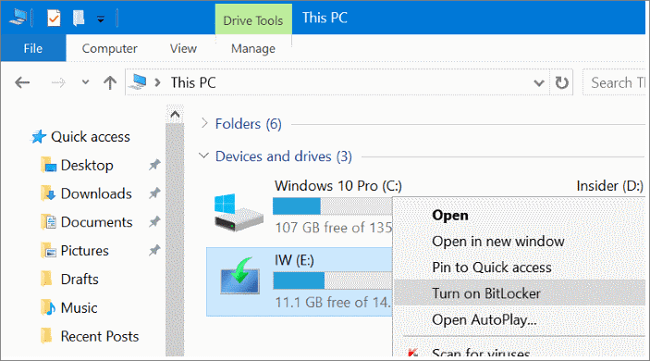
Step 2. Check the box "Use a password to unlock the drive", enter and reenter your password. Set the password as required and click "Next" to move on.
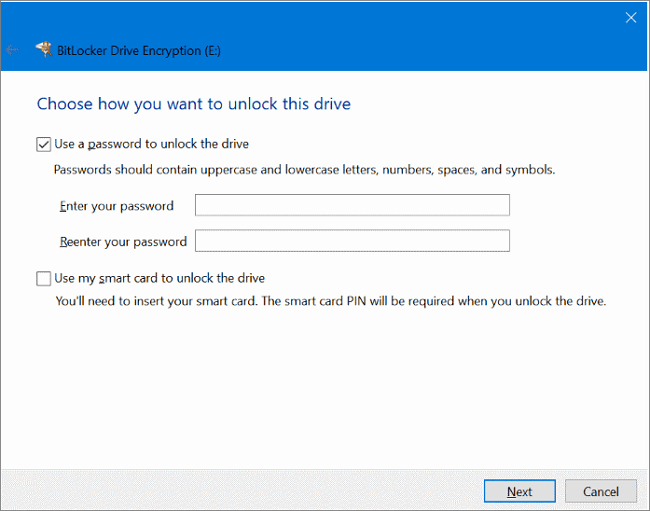
Step 3. Choose a way to back up your recovery key. You can choose "Save to your Microsft account", "Save it a file", or "Print the recovery key". Click "Next" to the following step.
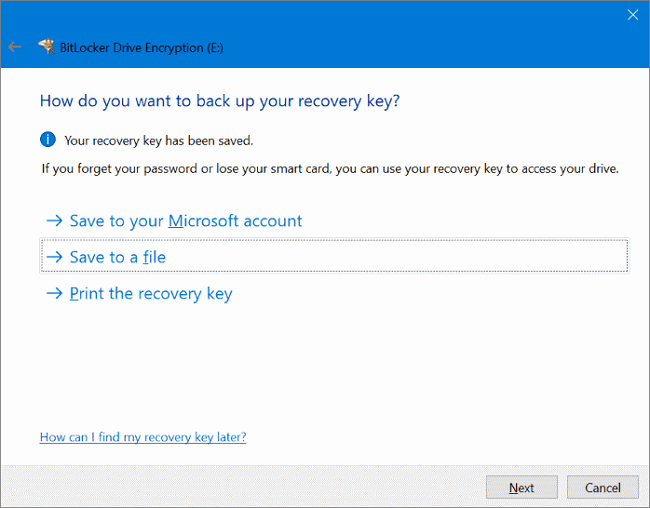
Step 4. Choose "Encrypt entire drive" to ensure that all data is protected, even data that you deleted but that might still contain retrievable information. And then, click the "Next" button.
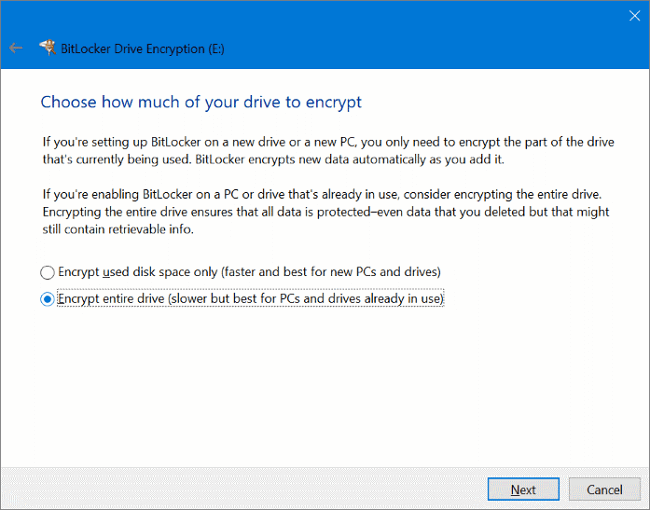
Step 5. On the "Choose which encryption mode to use" screen, select "Compatible mode" and then click "Next".
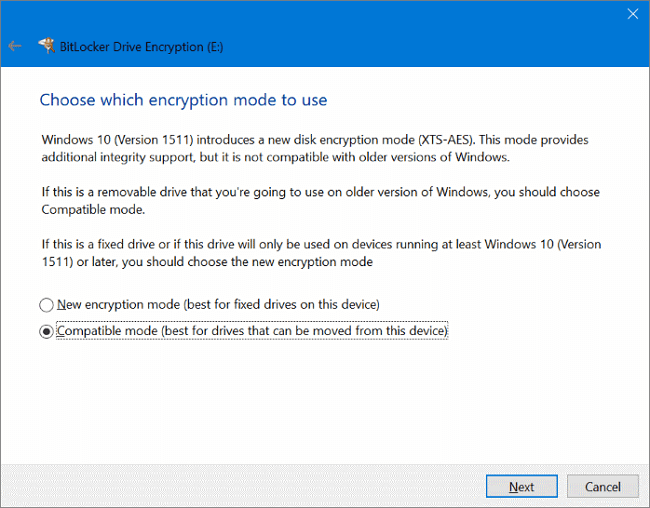
Step 6. Finally, click "Start encrypting" to allows BitLocker to encrypt your USB drive with a password.
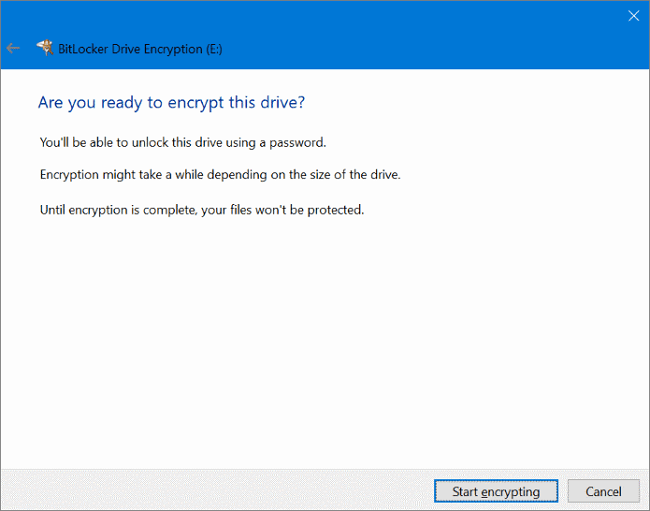
Read More: How to Encrypt USB Drive on Mac
It's not complex to encrypt a USB drive on Mac. Mac offers FileVault tool to encrypt a hard disk easily. Take the steps below.
Note:
- Windows cannot open drives encrypted with FileVault.
- The password you choose to protect your USB flash drive cannot be changed once it is configured.
Step 1. Connect the USB flash drive to your Mac.
Step 2. Open Finder. Find and right-click the USB drive, then select "Encrypt" the USB drive.
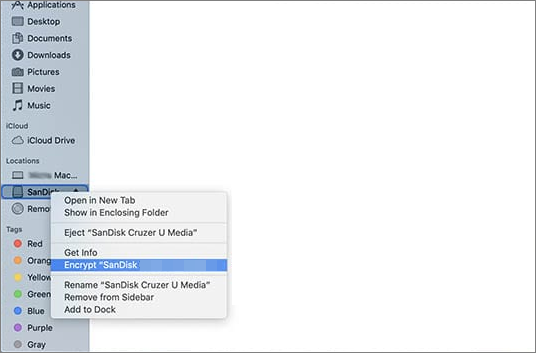
Step 3. Enter the password and confirm it. You can also add a hint to help remember the password later.
Step 4. Select "Encrypt Disk" to complete the USB drive encryption process.
Concluding Words
How can I encrypt my USB drive for free? If you are searching for the solutions to this question, you can figure it out here. This post covers three ways to encrypt a USB drive.
On Windows 10 or other Windows computers, you can use EaseUS LockMyFile to encrypt files and folders on USB with Advanced Encryption Standard (AES) 256-bit keys to protect your file safe. If you don’t like to use a third-party tool, you can encrypt USB drive with BitLocker on Windows 10 with detailed tutorials.
Also, we introduce a way to encrypt a USB drive on Mac, follow the guides to do it with ease.
Related Articles - ALSO ON EaseUS SOFTWARE
-
How to Fix Windows Won't Let Me Encrypt Folder
![Jean]() Jean/2025-04-15
Jean/2025-04-15
-
How Can You Password Protect Dropbox Folder on Windows & Mac
![Jean]() Jean/2025-04-15
Jean/2025-04-15
-
How to Lock RAR File with Password in Windows 11/10
![Jean]() Jean/2025-04-15
Jean/2025-04-15
-
How to Download Protected Videos from Any Website - 2 Methods
![Jean]() Jean/2025-04-15
Jean/2025-04-15
